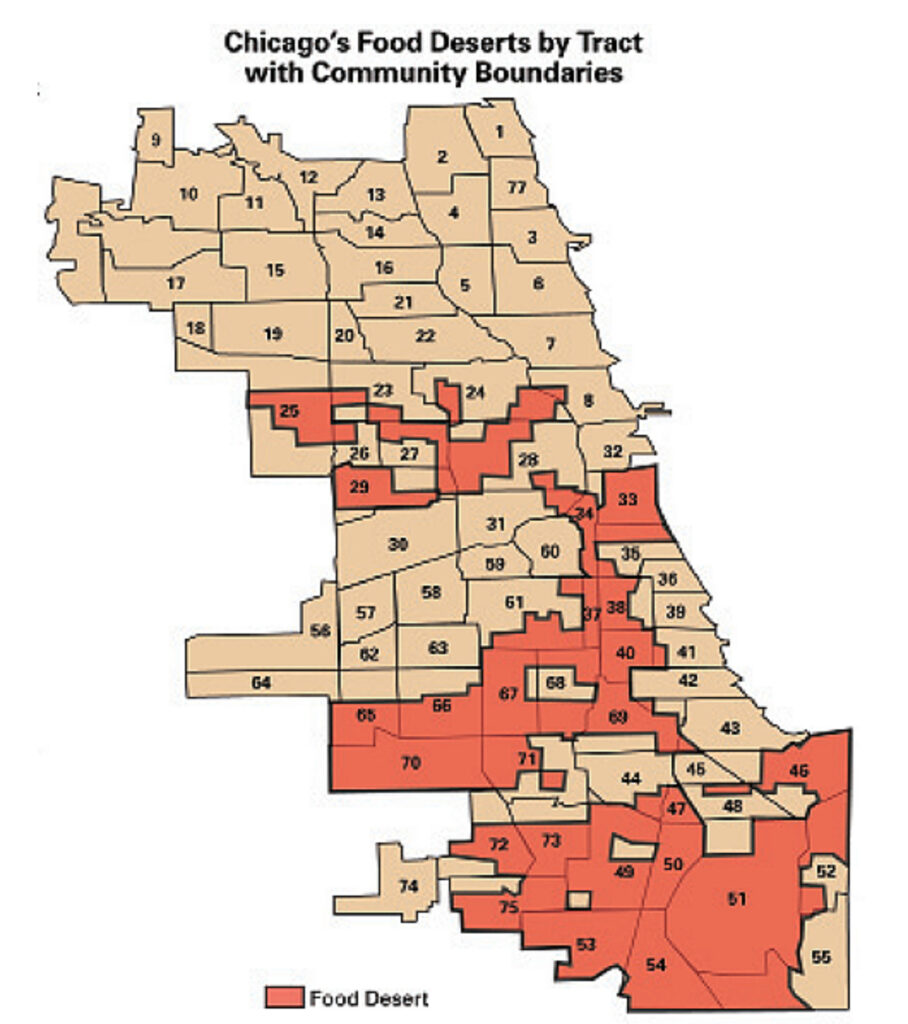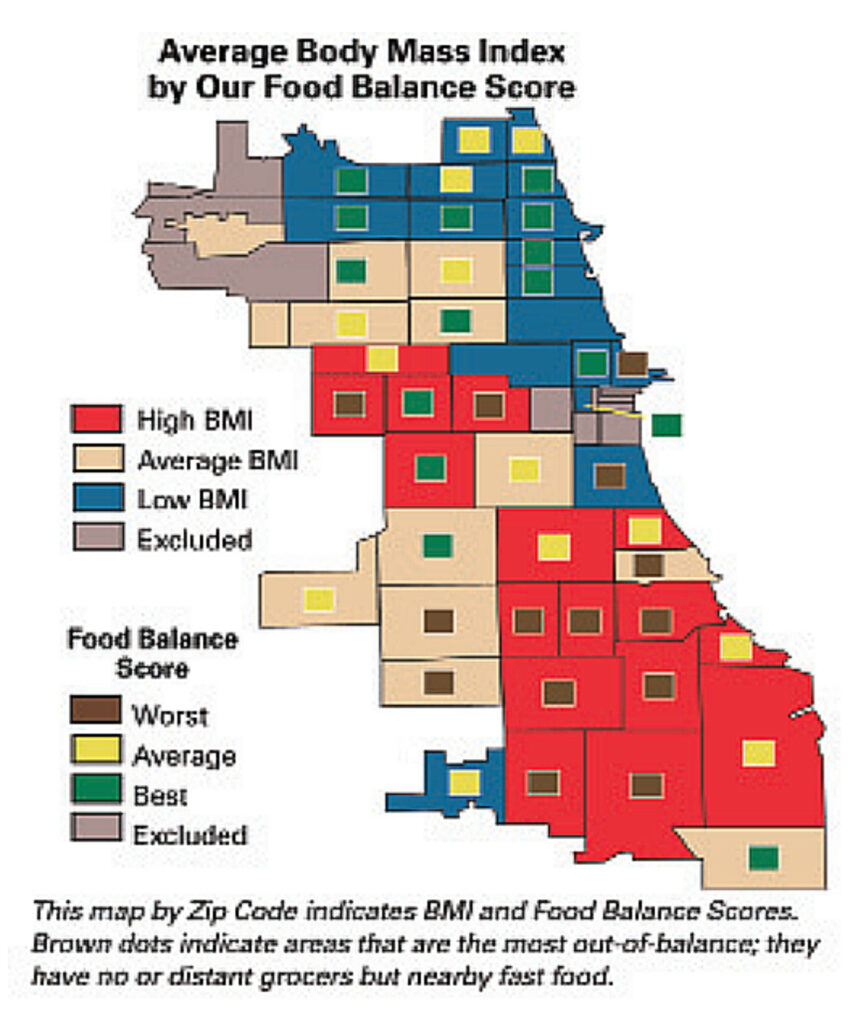| Planning Approach | Food Deserts |
| Concept Author | Mari Gallagher |
| Location | Chicago, Illinois, USA |
| Date | 2006-present |
| Featured Project | Fresh Moves Mobile Market |
| Implementing Agency | Food Desert Action |
| Project Members | Steven Casey, Sheelah Muhammad, Jeffrey Pinzino, Khalilah Worley |
| Design Agency | Architecture for Humanity-Chicago |
| Design Team | Joseph Altshuler, Marissa Brown, Laura Bowe, Lee Bouchard, Katherine Darnstadt, John Joyce, Tom Hagerty, Tina Kress, Thomas Kubik, Laurel Lipkin, Geoff Malia, Meghann Maves, Myriam Migrditchian, Lety Murray, Peter Ogbac, Stephanie Pifko, Mig Rod, Daniel Rollet, Dena Wangberg, Will Wingfield |
| Main Funder | Boeing; Chicago Transportation Authority; ChiWest ResourceNet; GreenBuild; JP Morgan Chase; Polk Brothers; UIC Urban Health Program partner |


Food desert maps of Chicago. Images: Mari Gallagher Research & Consulting
In July of 2006, researcher and consultant Mari Gallagher published a groundbreaking report, Examining the Impact of Food Deserts on Public Health in Chicago, in which she coined the term “food desert.” A food desert does not describe an area without food, but rather, an area with a severe imbalance of fringe food such as fast food restaurants and convenience stores as opposed to mainstream grocery stores that sell fresh produce, fruit, dairy and meat. This often results in significant health issues for the underserved population. The report also overlays statistics on Chicago’s racial demographics and income, and though food deserts often correlate with low-income, minority neighborhoods, this is not always the case.
Publicity surrounding the report has led to several different approaches to the problem around the country. The effects were even felt in the White House. The US Department of Agriculture released an online “Food Desert Locator” on its Website as part of First Lsady Michelle Obama’s Let’s Move! Campaign against childhood obesity.
Community activists Steven Casey, Sheelah Muhammad, and Jeff Pinzino worked together to find their own solution and founded Food Desert Action. Their research revealed that opening individual markets would not address the widespread need quickly or efficiently. Inspired by observations of food deliveries while on a vacation in Jamaica, Casey proposed the idea of a mobile market. In Jamaica, vendors brought meats one day, dairy another, and the idea of driving fresh foods directly to customers back home took root. By eliminating bricks and mortar, the team realized they could inexpensively reach many communities. The mobile markets could also become much more than a purveyor of food.

Fresh Moves mobile produce market bus. Photo: Katherine Darnstadt/Architecture for Humanity-Chicago

Interior of the Fresh Moves mobile produce market bus. Photo: Katherine Darnstatdt















READ OR LEAVE A COMMENT